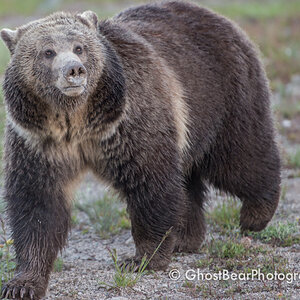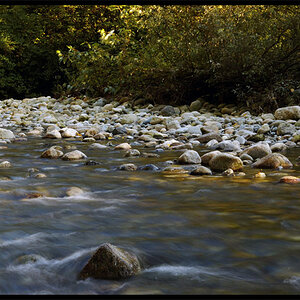Alpha
Troll Extraordinaire
- Joined
- Mar 15, 2005
- Messages
- 5,451
- Reaction score
- 41
- Location
- San Francisco
- Can others edit my Photos
- Photos NOT OK to edit
I've developed what I believe is a new technique in the "digital darkroom" world. I call it PEIL, for Photo Extrusion Ink Loading.
It all began when I was doing my grayscale calibration of the Epson 2200, and customizing ICC profiles for specific ink and paper combinations. If you're unfamiliar with this stuff, I'm basically talking about a "photo black" and a "matte black" ink cartridge, and Gloss, Semi Gloss, or Matte Paper. My prints are done on Ilford Galerie paper. The technique itself seems to work equally well on Epson papers, but with a noticeably greater degree of metamerism (for all black and white prints in my opinion). I noticed that occasionally, when printing photos on semi-gloss paper (or smooth pearl in this case) that had very dark sections, I would get this strange overloading of ink onto the paper. The normal course of action here would be to drop the dot count so that doesn't happen, but I was intrigued. The overloading causes ink to build up in certain spots on the photo. Looking at it dead on, it looks perfectly normal, but from other angles it creates an almost holographic image, adding three-dimensional perspective to those particularly darkened areas. To make a long story short, with a lot of toying around, I eventually came up with custom profiles and print settings that allow me to load ink onto certain parts of the photo, so that I can control the "extrusion" as I call it. The result is a really, really interesting photo, the characteristics of which are unlike anything i've ever seen that's been intentionally produced to look that way. All in all, the technique seems to work best with semi-gloss paper and matte black ink, though it will work with photo black, depending on how you outline the loading process in your print settings and profiles. It does not work on matte paper, and I'm still doing testing on gloss paper, though I believe i can achieve some good results using matte ink on gloss paper if I play with it long enough.
I'm sure that some people (if not a number of them) have experienced this "problem," so to speak, with their pigment-based inkjets. I've taken that problem and turned it into an intentional, and I believe new, digital printing process. Correct me if I'm wrong to claim to be the first person to do so. Otherwise, I'm kinda proud, because the photos are really cool looking.
I'll try to snap some shots of the PEIL prints from different angles with a point-and-shoot, and post them up here so you all can see the technique.
Here is what the printed photo looks like dead-on:

These shots don't do the real life effect justice, but they should give you some idea of what it looks like from certain angles:


It all began when I was doing my grayscale calibration of the Epson 2200, and customizing ICC profiles for specific ink and paper combinations. If you're unfamiliar with this stuff, I'm basically talking about a "photo black" and a "matte black" ink cartridge, and Gloss, Semi Gloss, or Matte Paper. My prints are done on Ilford Galerie paper. The technique itself seems to work equally well on Epson papers, but with a noticeably greater degree of metamerism (for all black and white prints in my opinion). I noticed that occasionally, when printing photos on semi-gloss paper (or smooth pearl in this case) that had very dark sections, I would get this strange overloading of ink onto the paper. The normal course of action here would be to drop the dot count so that doesn't happen, but I was intrigued. The overloading causes ink to build up in certain spots on the photo. Looking at it dead on, it looks perfectly normal, but from other angles it creates an almost holographic image, adding three-dimensional perspective to those particularly darkened areas. To make a long story short, with a lot of toying around, I eventually came up with custom profiles and print settings that allow me to load ink onto certain parts of the photo, so that I can control the "extrusion" as I call it. The result is a really, really interesting photo, the characteristics of which are unlike anything i've ever seen that's been intentionally produced to look that way. All in all, the technique seems to work best with semi-gloss paper and matte black ink, though it will work with photo black, depending on how you outline the loading process in your print settings and profiles. It does not work on matte paper, and I'm still doing testing on gloss paper, though I believe i can achieve some good results using matte ink on gloss paper if I play with it long enough.
I'm sure that some people (if not a number of them) have experienced this "problem," so to speak, with their pigment-based inkjets. I've taken that problem and turned it into an intentional, and I believe new, digital printing process. Correct me if I'm wrong to claim to be the first person to do so. Otherwise, I'm kinda proud, because the photos are really cool looking.
I'll try to snap some shots of the PEIL prints from different angles with a point-and-shoot, and post them up here so you all can see the technique.
Here is what the printed photo looks like dead-on:

These shots don't do the real life effect justice, but they should give you some idea of what it looks like from certain angles:




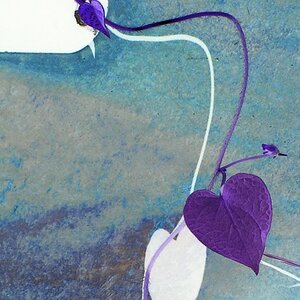
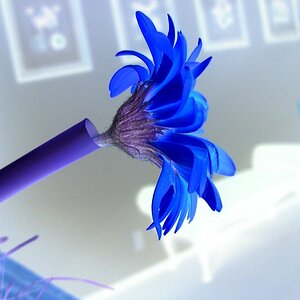
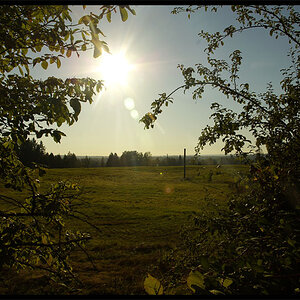

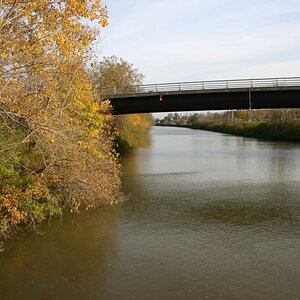
![[No title]](/data/xfmg/thumbnail/42/42034-6262420ff3ea238f05395bbcc7ae1f28.jpg?1619739985)
